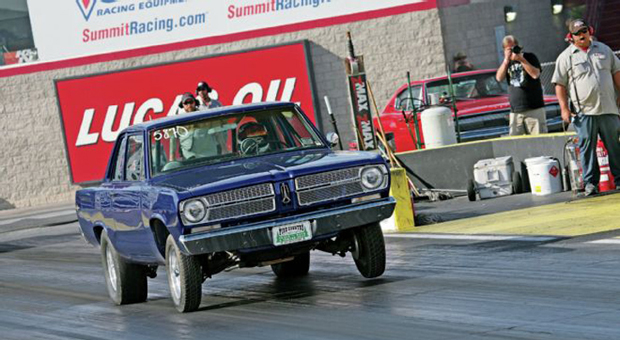
Drag Race 101: Pinion Angle and Traction
You’ve just staged your car. The lights are counting down. As you wait for that precise moment to release the brakes, a drip of sweat rolls into your eye. At that very second, the green is lit, and you release the brakes to launch. Immediately, the tires on your car violently launch you forward. Almost just as fast, they unload, and start to spin. You were sure you had the tire pressure where it needed to be, so what could have caused this race-losing situation?
More times than not, it is the tire pressure that has cost you the race, but in this instance, there could be another culprit. How do we know that there is something else going on? We already checked the tire pressure and its right where it should be. The next thing to check is the pinion angle.
Pinion angle simply refers to the angle of the differential’s pinion shaft and yoke in relation to the driveshaft. If you’re running a leaf-spring car, the pinion angle is set by the welded perches on the axle housing. The universal joint is the part of this equation that allows the pinion angle to change as needed. A universal joint is designed to be comfortable with between one and three degrees of pinion angle. If the U-joint is forced beyond its normal range, it can hyperextend, and let’s just say that when this happens, things can get ugly—and scattered across the track. Two degrees of pinion angle on a street car—regardless of the type of rear suspension being used, is the norm.
For the purpose of this article, we’ll assume you are racing a leaf spring–equipped car. With leaf springs, the differential is able to rotate a small amount as the springs react, and this changes the pinion angle. For this reason, a leaf spring-equipped car needs to have more angle designed into the suspension to prevent the U-joint from hyperextending when under load. Sometimes people increase the pinion angle to even increase dragstrip bite. But, does the pinion angle really have an effect on traction?
A typical leaf spring rear suspension needs, roughly, 5-7 degrees of negative angle (pinion pointing down). You never want the pinion setup with a positive pinion angle (pointing up). This can lead to binding of the u-joints as the suspension reacts, and will hurt traction.
To check the pinion angle, the vehicle needs to be sitting with its weight on the tires, at normal ride height. You will need an angle finding gauge, and these can be bought from places such as Harbor Freight for about $10. Start by measuring the angle of the driveshaft and writing it down. Next, remove the driveshaft from the rear end yoke and place the angle finder on the end of the yoke. If the driveshaft was angled upward from the rear end (it would be rare to find one that isn’t), and the rear is pointed, just add the two angles you measured. For instance, if the driveshaft is 2-degrees up from level, and the pinion is 3-degrees down, then you have 5-degrees of pinion angle.
Okay, we know what pinion angle is, and how to find what it is in your car, but we didn’t answer the question, “does the pinion angle really have an effect on traction?” The answer is yes, and no. While the actual setting of pinion angle does not have an effect on traction, in a leaf spring car, the changes encountered in the rear suspension during a launch can.
Applying power through a pair of leaf springs creates what is called spring wrap-up. When you launch the car, the spring wants to create an S shape. If this bending motion becomes severe enough, the spring binds and then bounces the tire off the road. This relieves the tension in the spring, and the tire then returns to the pavement, and the process repeats itself with a nasty “wheel hop”. Wheel hop not only eliminates traction, but can quickly damage parts, and even yank the driveshaft out of the transmission if violent enough.
So, while a stationary pinion angle will not have much effect on traction, once it moves, all bets are off. There are solutions to fix this problem. Some are fairly inexpensive, and some might cost a little more. Check out the simple solutions below, and we’re sure you can improve your 60-foot times.






One thing to remember is that not all slapper bars are created equal. The rubber snubber needs to contact the spring eye. If they simply apply pressure to the area behind the spring eye, eventually, the spring will bend. So, either get the right traction bars for your particular model, or you can lengthen or shorten yours to work correctly.




Leave a Reply